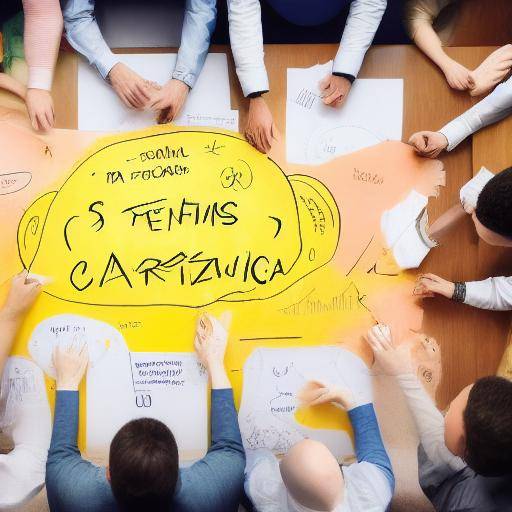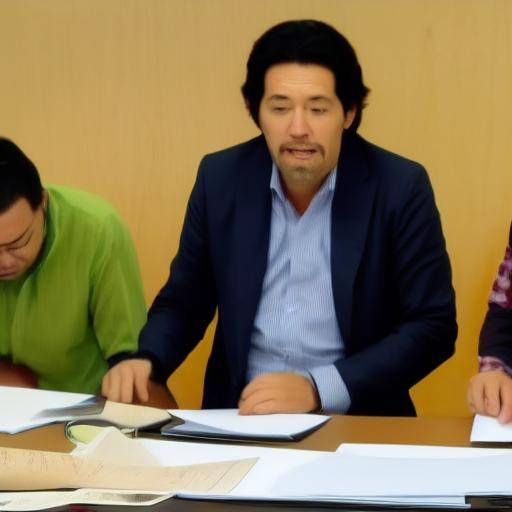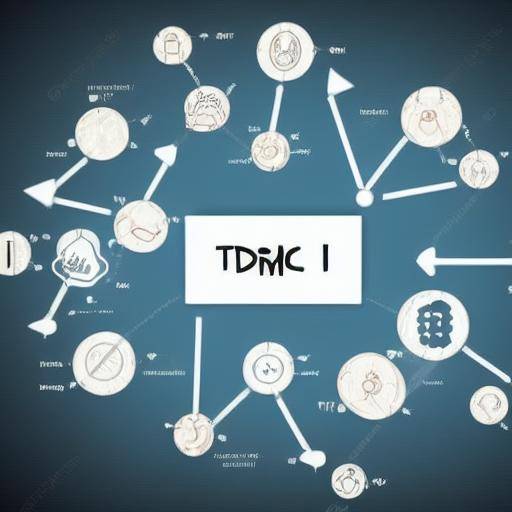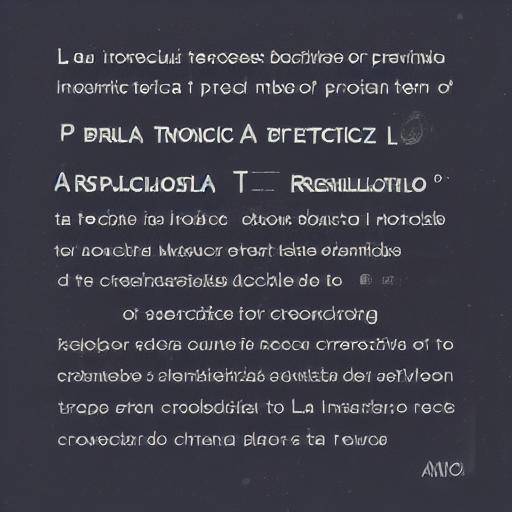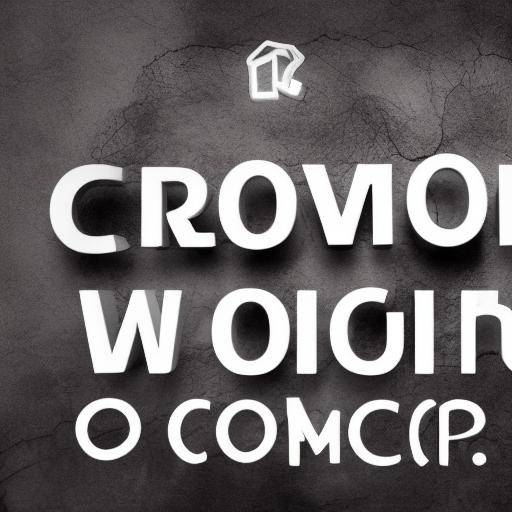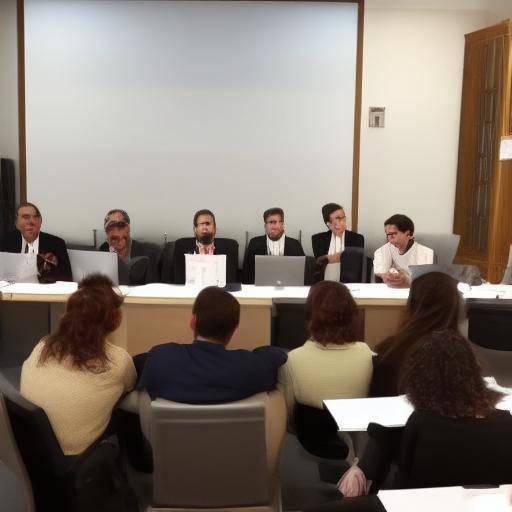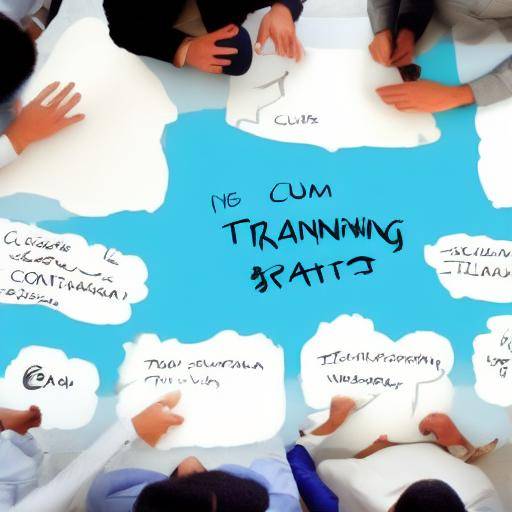
The brainstorming, also known as brainstorming, is a highly effective technique to foster creativity, resolve conflicts and generate innovative solutions. In this article, we will explore in depth how brainstorming can be successfully applied in conflict resolution, ranging from its history and foundations to its practical application and future perspectives.
Introduction
Conflict is an inevitable part of life, whether in the labour, family, social or personal spheres. Effective conflict resolution often requires new perspectives and innovative approaches. This is where the brainstorming becomes an invaluable tool. With the aim of deploying its full potential in conflict management, we will investigate the historical and theoretical roots of brainstorming, explore its application in conflict resolution and analyze the impact of creativity on this process.
History and Background
The concept of brainstorming was developed by Alex Faickney Osborn in the 1940s. Osborn, a publicist and writer, firmly believed in the power of creative collaboration and the generation of innovative ideas through collective participation. In his book "Applied Imagination", published in 1953, Osborn outlined the fundamental principles of brainstorming, establishing the basis for the technique we know today.
As the brainstorming gained popularity, it became a central tool in the business arena to promote creativity, problem solving and decision-making. In the following decades, the concept expanded to other fields, including psychology, education and conflict resolution.
Analysis in Deep
The brainstorming has consolidated itself as a powerful technique to generate ideas, explore multiple perspectives and encourage active participation in conflict resolution. By fostering diversity of views and free expression of ideas, brainstorming facilitates the unlocking of creative solutions and identifying potential obstacles. Although it is a powerful tool, brainstorming also poses challenges, such as effective session management, the balance between active participation and decision-making, and the critical evaluation of the ideas generated.
Comprehensive review
The brainstorming can be applied in various ways in conflict resolution. From the business arena, where brainstorming sessions are used to address operational challenges, to therapeutic environments, where open communication and collaborative resolution of interpersonal conflicts are encouraged, brainstorming provides a flexible framework for conflict resolution in diverse contexts.
In the management of labour conflicts, brainstorming can help identify underlying causes, generate creative solutions and foster a collaborative environment where the parties involved feel heard and empowered. In addition, the application of the brainstorming in the resolution of family conflicts can open up new channels of communication and help overcome differences through creativity and empathy.
Comparative analysis
The brainstorming, conflict resolution and creativity share an intrinsic connection. While brainstorming is a tool to promote creativity and conflict resolution, creativity drives the brainstorming process and nourishes conflict resolution with innovative solutions. It is this interdependence that makes the combination of these areas so powerful.
Practical Tips and Accessible Advice
By implementing the brainstorming to resolve conflicts, it is essential to establish an enabling environment for collaboration and creativity. The diversity of thought and the active inclusion of all parties involved in the process are fundamental pillars for the success of brainstorming in conflict resolution. In addition, adequate facilitation, clear rules of engagement and effective time management are key elements for maximizing the potential of brainstorming in conflict management.
Industry Perspectives and Expert Reviews
According to experts in conflict management, the use of brainstorming can transform the way organizations address and resolve internal and external challenges. Active collaboration, the generation of innovative solutions and the promotion of an atmosphere of openness and confidence are vital aspects that brainstorming brings to conflict resolution. As organizations seek more effective ways to address the diversity of conflicts, the role of brainstorming becomes increasingly relevant in the current landscape.
Case studies and practical applications
To better understand the applicability of brainstorming in conflict resolution, it is essential to analyze case studies that illustrate their real impact. From interdepartmental conflicts in multinational companies to communication challenges in community settings, case studies show how brainstorming has been successfully used to overcome obstacles and foster collaborative solutions in a variety of contexts.
Future Trends and Predictions
As society evolves, conflict resolution becomes increasingly important in all spheres of life. Current trends suggest a greater focus on the application of innovative techniques such as brainstorming to address complex conflict dynamics. The use of brainstorming is expected to continue to expand as organizations and communities recognize their value in fostering the creativity, collaboration and effective resolution of conflicts.
FAQ
How can effective participation of all parties be ensured in a brainstorming session to resolve conflicts?
Effective participation can be ensured by establishing an atmosphere of openness and mutual respect, encouraging all participants to express their ideas freely, and assigning sufficient time for the session.
What are some strategies to overcome the creative blockade during a brainstorming session?
Some strategies include changing the physical environment, fostering collaboration through games or exercises, and allowing breaks to refresh the mind.
How can brainstorming be applied in resolution of family conflicts?
The brainstorming can be applied by facilitating open dialogue sessions, fostering empathy and mutual understanding, and focusing on the generation of constructive solutions.
What is the role of creativity in the brainstorming for conflict resolution?
Creativity plays a crucial role in enabling the generation of non-conventional solutions, opening new perspectives and fostering innovative collaboration.
How can you assess the effectiveness of a brainstorming session in conflict resolution?
Effectiveness can be assessed by identifying practical solutions generated, the degree of participation and collaboration, and the impact on successful conflict resolution.
What tools or resources can be useful for the successful implementation of brainstorming in conflict resolution?
The use of slates or spaces to write down ideas, the use of collaborative digital tools, and professional facilitation can be valuable resources for brainstorming success.
Conclusion
The brainstorming represents a powerful tool for effective conflict resolution, allowing the generation of innovative solutions, promoting collaboration and opening, and facilitating a creative approach to addressing complex challenges. By incorporating brainstorming into conflict management, organizations and communities can enhance their ability to overcome obstacles, promote effective communication and generate sustainable solutions.
In short, brainstorming is a fundamental pillar in modern conflict management, and its relevance will only continue to grow as organizations seek innovative approaches to solving complex challenges.
With this in mind, we encourage you to explore the various brainstorming applications in conflict resolution in your environment, and to consider how this technique could transform the way we address the challenges we face. The future of conflict resolution is driven by creativity, collaboration and openness, and brainstorming becomes a beacon on this evolving horizon.
With this article, we hope to have provided a complete and insightful view on the use of the brainstorming technique to resolve conflicts, as well as practical ideas for its effective implementation. By integrating brainstorming into your conflict resolution processes, you can discover new possibilities, strengthen collaboration and open paths to innovative and sustainable solutions.
Remember, the power of the brainstorming lies in the diversity of ideas and the willingness to explore new avenues for conflict resolution. By adopting this technique with open mind and strategic focus, you will be taking a significant step towards the positive transformation of the conflicts you face.
Go ahead, unleash your creativity and address your conflicts with the open mind and collaborative spirit of brainstorming!
Link of interest:
Link of interest:
Link of interest:

